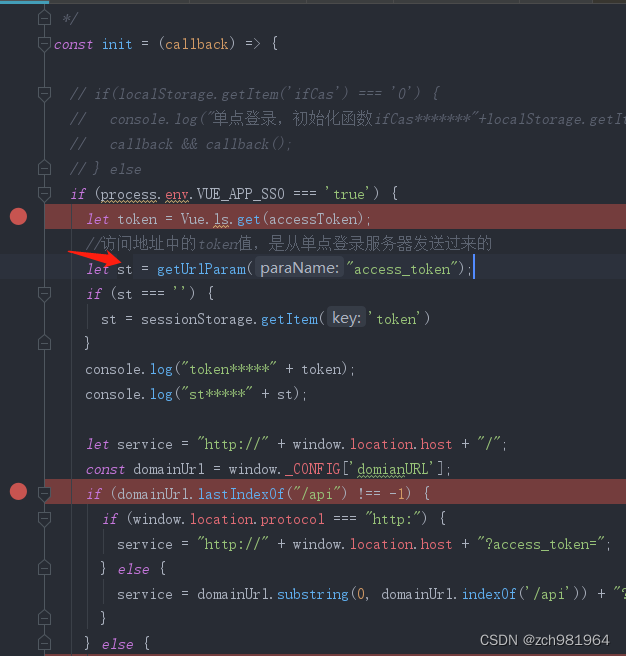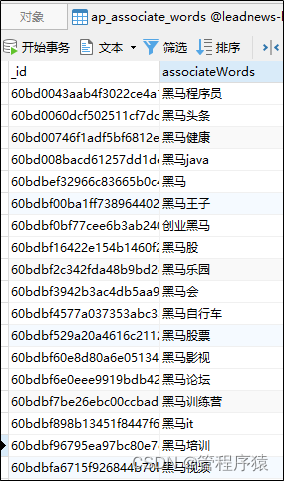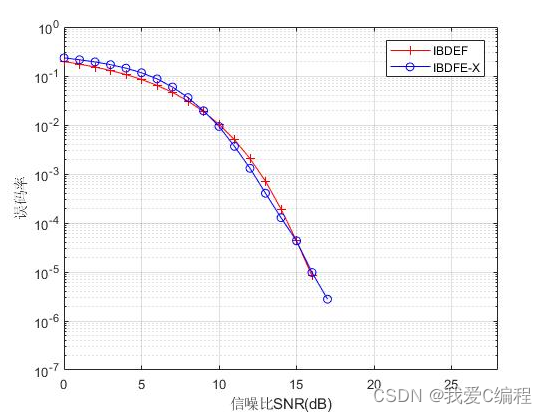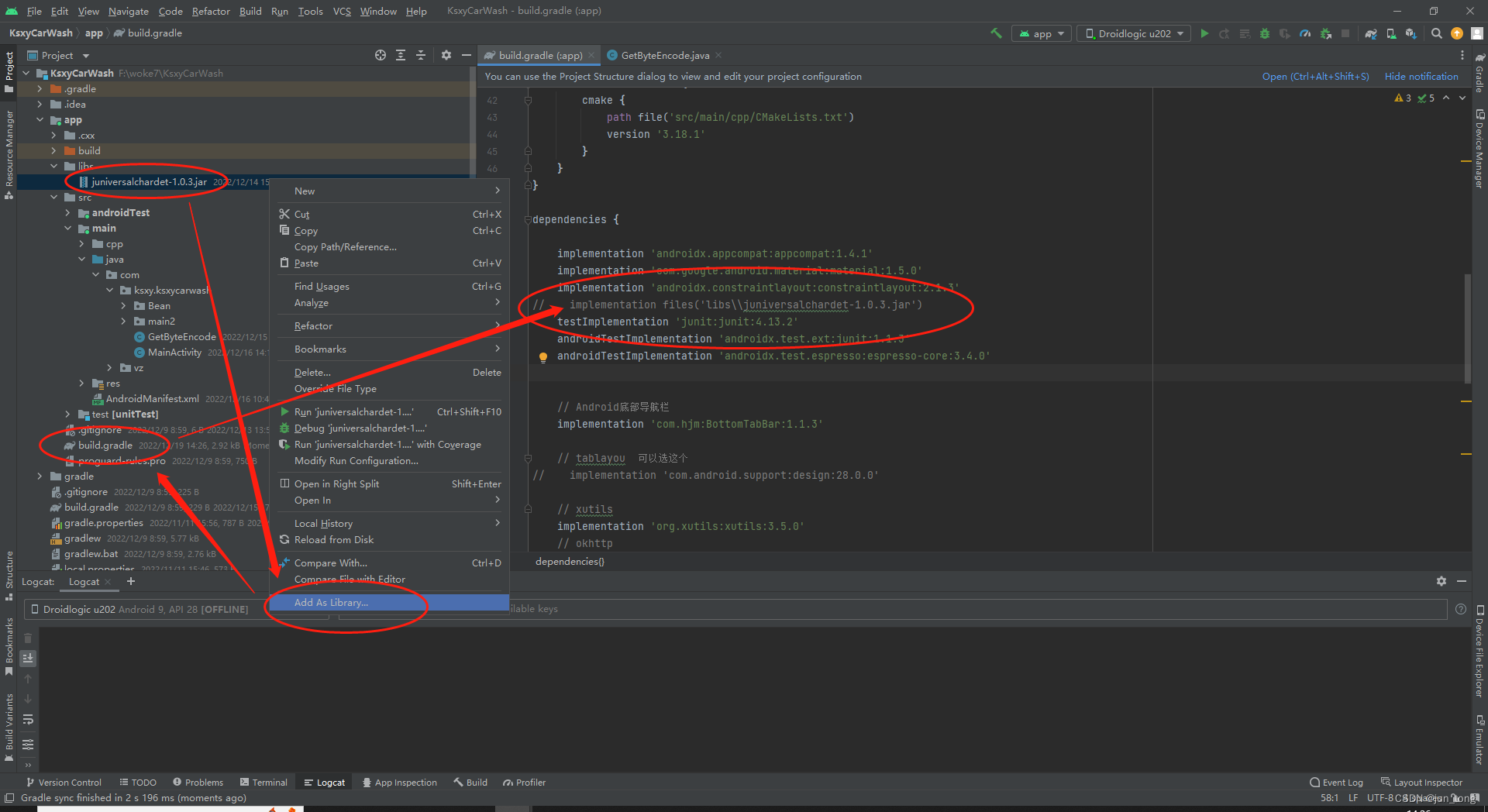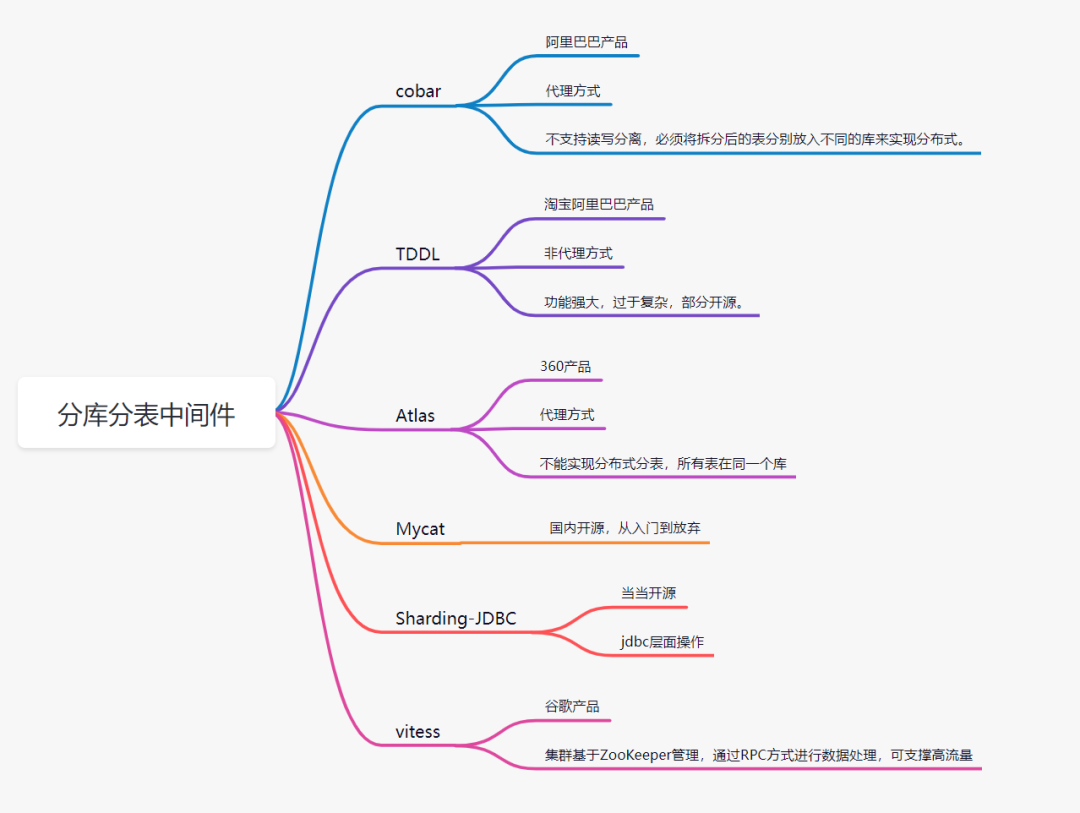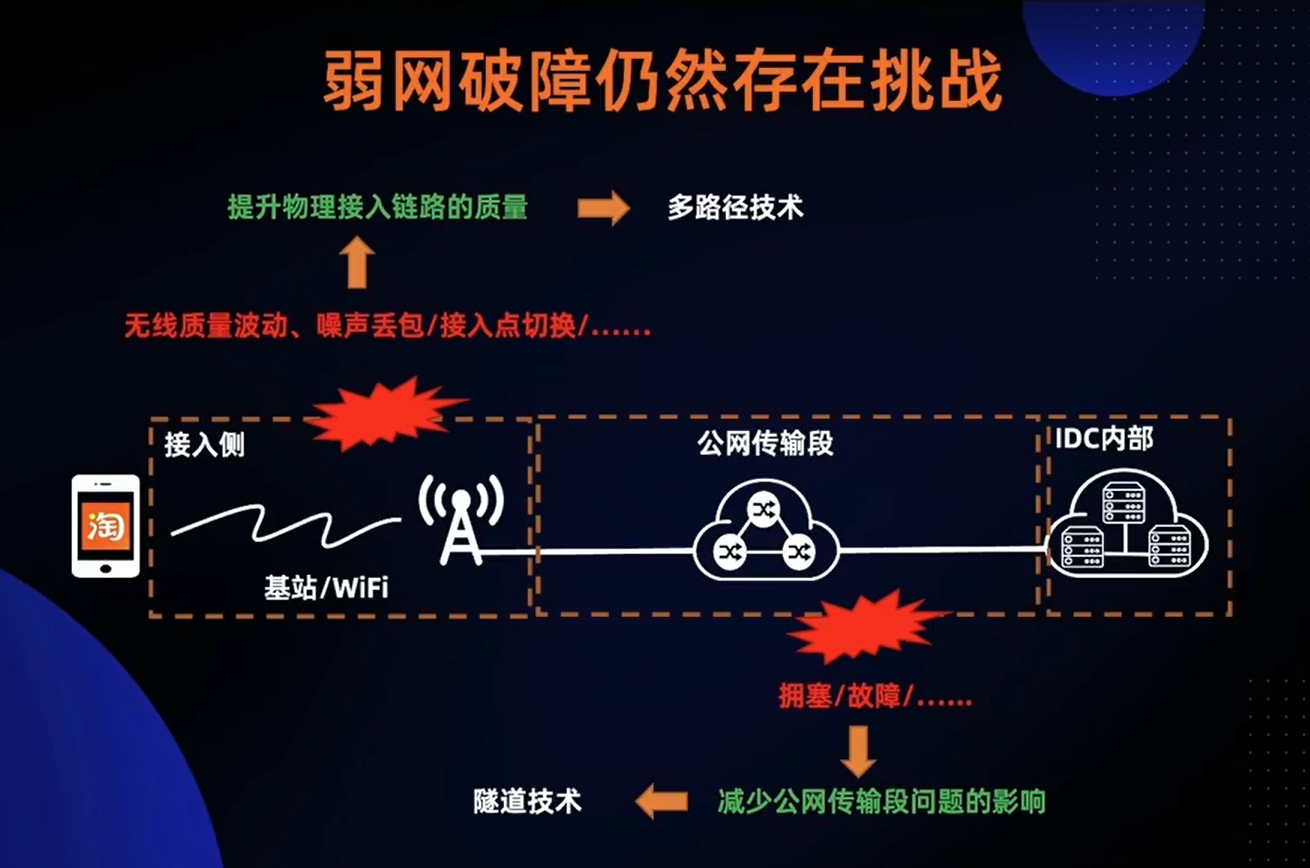map简析
map是一个集数组与链表(美貌与智慧)特性于一身的数据结构,其增删改查时间复杂度都非常优秀,在很多场景下用其替代树结构。关于map的特性请自行学习。
Go语言在语言层面就支持了map,而非其他语言(如Java)通过外置类库的方式实现。
使用 map[KeyType]ValueType 方式定义map类型变量。如 var mp map[string]int。
在使用map之前,必须先初始化map,使用 mp = make(map[string]int,cap)等形式。
一个未经初始化的map类型变量是可以读的,但读出来的内容皆为ValueType类型的零值。
map类型不支持并发的读写,但可以在非写入的状态并发的读取其中内容。
map的初始化同样是编译时与运行时共同努力的成果。
常用的位运算操作
移位 左移1位相当于原数乘以2,右移1位相当于原数除以2
B = 5
1 << B = 00000001 << 5 = 00100000 = 32
2的B次幂 - 1 相当于 将2的B-1次幂 + 2的B-2次幂 +…+ 2的0次幂
1 << B - 1 = 00100000 - 00000001 = 00011111 = 31
位清空M &^= N
01010101 &^ 00001111 = 01010000
位异或 M ^ N
01010101 ^ 10101010 = 11111111
11111111 ^ 10101010 = 01010101
Go map整体结构图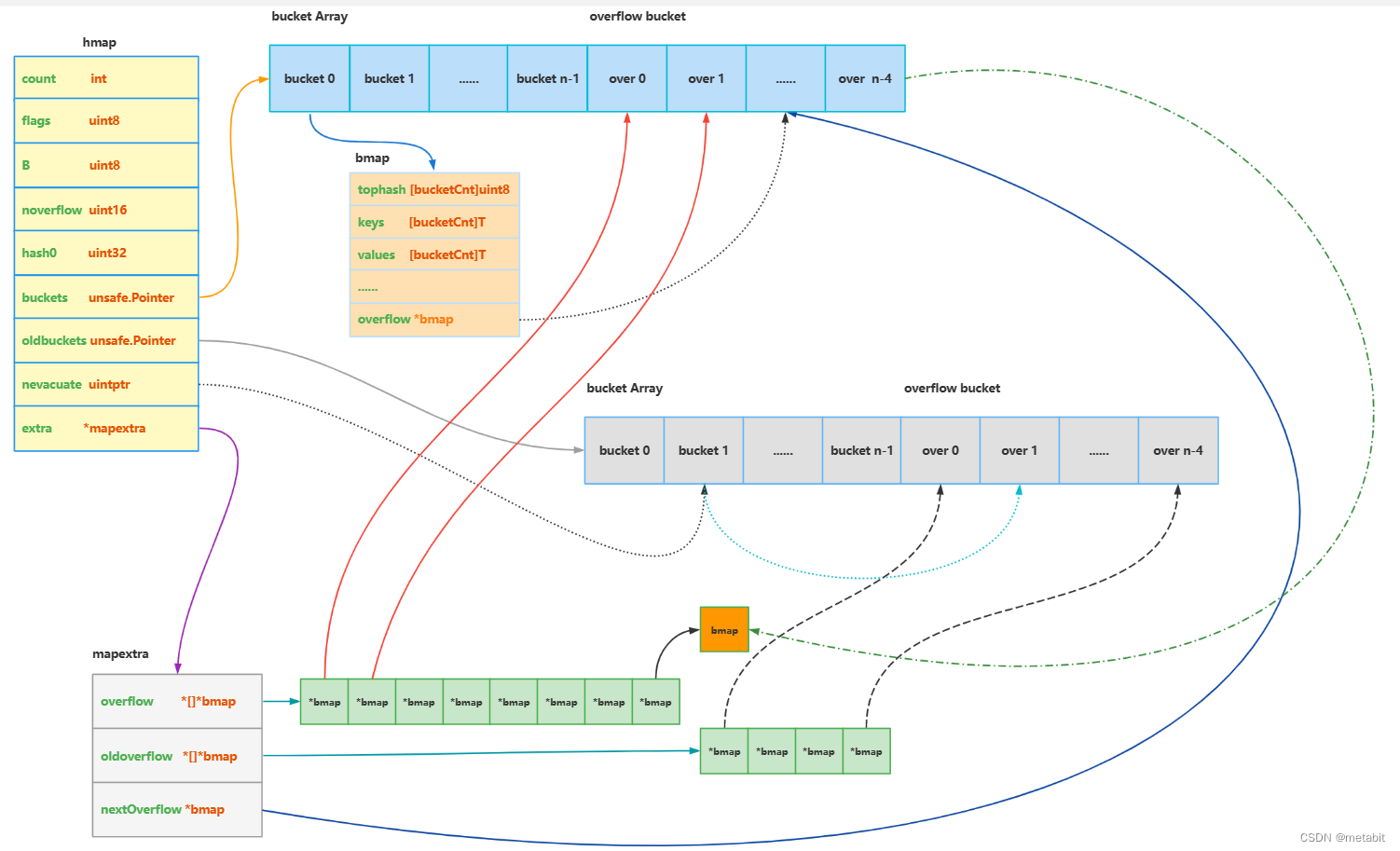
go map源码里的介绍
// This file contains the implementation of Go's map type.
//
// A map is just a hash table. The data is arranged
// into an array of buckets. Each bucket contains up to
// 8 key/elem pairs. The low-order bits of the hash are
// used to select a bucket. Each bucket contains a few
// high-order bits of each hash to distinguish the entries
// within a single bucket.
//
// If more than 8 keys hash to a bucket, we chain on
// extra buckets.
//
// When the hashtable grows, we allocate a new array
// of buckets twice as big. Buckets are incrementally
// copied from the old bucket array to the new bucket array.
//
// Map iterators walk through the array of buckets and
// return the keys in walk order (bucket #, then overflow
// chain order, then bucket index). To maintain iteration
// semantics, we never move keys within their bucket (if
// we did, keys might be returned 0 or 2 times). When
// growing the table, iterators remain iterating through the
// old table and must check the new table if the bucket
// they are iterating through has been moved ("evacuated")
// to the new table.
// Picking loadFactor: too large and we have lots of overflow
// buckets, too small and we waste a lot of space. I wrote
// a simple program to check some stats for different loads:
// (64-bit, 8 byte keys and elems)
// loadFactor %overflow bytes/entry hitprobe missprobe
// 4.00 2.13 20.77 3.00 4.00
// 4.50 4.05 17.30 3.25 4.50
// 5.00 6.85 14.77 3.50 5.00
// 5.50 10.55 12.94 3.75 5.50
// 6.00 15.27 11.67 4.00 6.00
// 6.50 20.90 10.79 4.25 6.50
// 7.00 27.14 10.15 4.50 7.00
// 7.50 34.03 9.73 4.75 7.50
// 8.00 41.10 9.40 5.00 8.00
//
// %overflow = percentage of buckets which have an overflow bucket
// bytes/entry = overhead bytes used per key/elem pair
// hitprobe = # of entries to check when looking up a present key
// missprobe = # of entries to check when looking up an absent key
//
// Keep in mind this data is for maximally loaded tables, i.e. just
// before the table grows. Typical tables will be somewhat less loaded.
哈希冲突解决方法
- 开放寻址法:线性探查、二次方探查、双散列等
- 拉链法 (Go语言中的map 使用了该方法解决哈希冲突)
负载因子 OverLoadFactor
map中 负载因子 = 元素的数量 / 桶的数量, Go语言中map的负载因子为6.5
负载因子超过既定的值会引发扩容操作
map运行时的结构
以下代码若未标注出处,则均来自src/runtime/map.go文件
// A header for a Go map.
type hmap struct {
// Note: the format of the hmap is also encoded in cmd/compile/internal/reflectdata/reflect.go.
// Make sure this stays in sync with the compiler's definition.
count int // # live cells == size of map. Must be first (used by len() builtin)
flags uint8
B uint8 // log_2 of # of buckets (can hold up to loadFactor * 2^B items)
noverflow uint16 // approximate number of overflow buckets; see incrnoverflow for details
hash0 uint32 // hash seed
buckets unsafe.Pointer // array of 2^B Buckets. may be nil if count==0.
oldbuckets unsafe.Pointer // previous bucket array of half the size, non-nil only when growing
nevacuate uintptr // progress counter for evacuation (buckets less than this have been evacuated)
extra *mapextra // optional fields
}
- count map中元素的数量,用内置函数len()获取的map数量就是该数量
- flags 标记map状态的字段,如正在写入,正在迭代等
- B 2的指数,map中一共有1 << B 个桶
- noverflow 溢出桶的个数
- hash0 哈希种子,对key做哈希时,会加入该种子,确保map的安全性
- buckets 桶数组的指针
- oldbuckets 旧桶数组的指针
- nevacuate 该字段表示迁移进度,或当前应迁移桶的下标,即小于该字段值的桶都已迁移完成。
- extra 溢出桶的指针
type mapextra struct {
// If both key and elem do not contain pointers and are inline, then we mark bucket
// type as containing no pointers. This avoids scanning such maps.
// However, bmap.overflow is a pointer. In order to keep overflow buckets
// alive, we store pointers to all overflow buckets in hmap.extra.overflow and hmap.extra.oldoverflow.
// overflow and oldoverflow are only used if key and elem do not contain pointers.
// overflow contains overflow buckets for hmap.buckets.
// oldoverflow contains overflow buckets for hmap.oldbuckets.
// The indirection allows to store a pointer to the slice in hiter.
overflow *[]*bmap
oldoverflow *[]*bmap
// nextOverflow holds a pointer to a free overflow bucket.
nextOverflow *bmap
}
- overflow 溢出桶数组指针,仅当key和elem非指针时才使用
- oldoverflow 旧的溢出桶数组指针,仅当key和elem非指针时才使用
- nextOverflow 下一个可用的溢出桶地址
// A bucket for a Go map.
type bmap struct {
// tophash generally contains the top byte of the hash value
// for each key in this bucket. If tophash[0] < minTopHash,
// tophash[0] is a bucket evacuation state instead.
tophash [bucketCnt]uint8
// Followed by bucketCnt keys and then bucketCnt elems.
// NOTE: packing all the keys together and then all the elems together makes the
// code a bit more complicated than alternating key/elem/key/elem/... but it allows
// us to eliminate padding which would be needed for, e.g., map[int64]int8.
// Followed by an overflow pointer.
}
- tophash 存储哈希值的高八位,加快增删改查寻址效率
- key [bucketCnt]KeyType 存储key的数组
- elem [bucketCnt]ElementType 存储value的数组
- …
- overflow *bmap 溢出桶指针
bmap是Go语言中map的桶类型,在源码中,bmap类型只有一个tophash字段。但在编译时期,Go编译器会根据用户代码自动注入相应的key,value等结构。bmap中最后一个字段是当前桶的溢出桶指针,一个桶可能会有多个溢出桶,他们是以链表的形式连接的。
map中需要的常量
const (
// Maximum number of key/elem pairs a bucket can hold.
bucketCntBits = 3 // bucketCount 左移 的位数
bucketCnt = 1 << bucketCntBits // 每个bucket中存储八组键值对
// Maximum average load of a bucket that triggers growth is 6.5.
// Represent as loadFactorNum/loadFactorDen, to allow integer math.
loadFactorNum = 13 // 负载因子分子
loadFactorDen = 2 // 负载因子分母
// Maximum key or elem size to keep inline (instead of mallocing per element).
// Must fit in a uint8.
// Fast versions cannot handle big elems - the cutoff size for
// fast versions in cmd/compile/internal/gc/walk.go must be at most this elem.
maxKeySize = 128 //Key 最大的size
maxElemSize = 128 //Value(Elem)的最大size
// data offset should be the size of the bmap struct, but needs to be
// aligned correctly. For amd64p32 this means 64-bit alignment
// even though pointers are 32 bit.
dataOffset = unsafe.Offsetof(struct { //key在内存中的偏移量
b bmap
v int64
}{}.v)
// Possible tophash values. We reserve a few possibilities for special marks.
// Each bucket (including its overflow buckets, if any) will have either all or none of its
// entries in the evacuated* states (except during the evacuate() method, which only happens
// during map writes and thus no one else can observe the map during that time).
emptyRest = 0 // this cell is empty, and there are no more non-empty cells at higher indexes or overflows. // tophash 数组中 emptyRest 代表其后单元格均为空,包括其后的所有溢出桶
emptyOne = 1 // this cell is empty // tophash 数组中 代表当前单元格为空
evacuatedX = 2 // key/elem is valid. Entry has been evacuated to first half of larger table. // 迁移后的元素落入的新桶的index 与 旧桶一致 位于 旧桶的 tophash 数组中
evacuatedY = 3 // same as above, but evacuated to second half of larger table. // 迁移后的元素落入的新桶的index 是 该元素在旧桶中的index的二倍 位于 旧桶的 tophash 数组中
evacuatedEmpty = 4 // cell is empty, bucket is evacuated. // 迁移后的旧桶中无元素,代表迁移完成 位于 旧桶的 tophash 数组中
minTopHash = 5 // minimum tophash for a normal filled cell. // hash 计算完成后在若小于该值则 加上该值 保证 0 ~ 4 是预留的tophash数组中的标记状态
// flags
iterator = 1 // there may be an iterator using buckets // 一个迭代器在使用 buckets
oldIterator = 2 // there may be an iterator using oldbuckets // 同上,oldbuckets
hashWriting = 4 // a goroutine is writing to the map // 一个协程正在向哈希表写内容
sameSizeGrow = 8 // the current map growth is to a new map of the same size // 相等大小扩容
// sentinel bucket ID for iterator checks
noCheck = 1<<(8*goarch.PtrSize) - 1 // 哨兵 bucket ID 用于 迭代器检查, 表示无需检查的buckket
)
const maxZero = 1024 // must match value in reflect/value.go:maxZero cmd/compile/internal/gc/walk.go:zeroValSize
var zeroVal [maxZero]byte // 1024字节大小的空内存区域,作为返回的零值使用
`
检测 tophash 代表的单元格是否为空
// isEmpty reports whether the given tophash array entry represents an empty bucket entry.
func isEmpty(x uint8) bool {
return x <= emptyOne // <= 1 1 or 0 -> empty
}
bucketShift 1 << b 代表桶的数量 即 2 ^ b
// bucketShift returns 1<<b, optimized for code generation.
func bucketShift(b uint8) uintptr {
// Masking the shift amount allows overflow checks to be elided.
return uintptr(1) << (b & (goarch.PtrSize*8 - 1))
}
bucketMask 1 << b - 1 用hash的低B位与该值相与,即可得到hash对应的桶号
// bucketMask returns 1<<b - 1, optimized for code generation.
func bucketMask(b uint8) uintptr {
return bucketShift(b) - 1
}
tophash hash的高八位用于确定桶中存放数据的具体单元格位置,若该值 < minTopHash则加之,为单元格预留表示状态的值
// tophash calculates the tophash value for hash.
func tophash(hash uintptr) uint8 {
top := uint8(hash >> (goarch.PtrSize*8 - 8))
if top < minTopHash {
top += minTopHash
}
return top
}
evacuated 检查传入的桶是否已经迁移完
func evacuated(b *bmap) bool {
h := b.tophash[0]
return h > emptyOne && h < minTopHash // 若迁移完成,则tophash[0]的状态会被修正,从下往上扫描,见后续, 此处检查状态即可
}
overflow 获取b的溢出桶指针,位于桶的低goarch.PtrSize位,长度为goarch.PtrSize
func (b *bmap) overflow(t *maptype) *bmap {
return *(**bmap)(add(unsafe.Pointer(b), uintptr(t.bucketsize)-goarch.PtrSize))
}
setoverflow 设置b的溢出桶,将桶的溢出桶指针字段设置成ovf
func (b *bmap) setoverflow(t *maptype, ovf *bmap) {
*(**bmap)(add(unsafe.Pointer(b), uintptr(t.bucketsize)-goarch.PtrSize)) = ovf
}
keys 根据偏移量拿到key的指针
func (b *bmap) keys() unsafe.Pointer {
return add(unsafe.Pointer(b), dataOffset)
}
incrnoverflow 增加溢出桶个数,若溢出桶 小于 2 ^ 16个则直接 + 1,否则有1/(1<<(h.B-15))的概率 + 1
// incrnoverflow increments h.noverflow.
// noverflow counts the number of overflow buckets.
// This is used to trigger same-size map growth.
// See also tooManyOverflowBuckets.
// To keep hmap small, noverflow is a uint16.
// When there are few buckets, noverflow is an exact count.
// When there are many buckets, noverflow is an approximate count.
func (h *hmap) incrnoverflow() {
// We trigger same-size map growth if there are
// as many overflow buckets as buckets.
// We need to be able to count to 1<<h.B.
if h.B < 16 {
h.noverflow++
return
}
// Increment with probability 1/(1<<(h.B-15)).
// When we reach 1<<15 - 1, we will have approximately
// as many overflow buckets as buckets.
mask := uint32(1)<<(h.B-15) - 1
// Example: if h.B == 18, then mask == 7,
// and fastrand & 7 == 0 with probability 1/8.
if fastrand()&mask == 0 {
h.noverflow++
}
}
newoverflow 创建一个溢出桶,如果是bucketArray中最后一个可用的溢出桶,该桶的溢出桶指针置空,h.extra.nextOverflow 置空,表示无可用溢出桶
func (h *hmap) newoverflow(t *maptype, b *bmap) *bmap {
var ovf *bmap
if h.extra != nil && h.extra.nextOverflow != nil { // hmap中溢出桶字段非空
// We have preallocated overflow buckets available.
// See makeBucketArray for more details.
ovf = h.extra.nextOverflow
if ovf.overflow(t) == nil { //溢出桶的溢出桶指针为空,代表有可用的溢出桶,在makebucketArray的时候,将最后一个溢出桶的溢出桶指针指向了bucket的头部位置,用该状态代表已经是最后一个溢出桶。
// We're not at the end of the preallocated overflow buckets. Bump the pointer.
h.extra.nextOverflow = (*bmap)(add(unsafe.Pointer(ovf), uintptr(t.bucketsize))) //下移可用的溢出桶指针
} else { //代表已经是最后一个溢出桶了
// This is the last preallocated overflow bucket.
// Reset the overflow pointer on this bucket,
// which was set to a non-nil sentinel value.
ovf.setoverflow(t, nil) //其指针置空
h.extra.nextOverflow = nil // 可用溢出桶指针置空
}
} else { // hmap中溢出桶字段为空
ovf = (*bmap)(newobject(t.bucket)) // 创建一个1个单位的新的溢出桶
}
h.incrnoverflow() //增长溢出桶个数
if t.bucket.ptrdata == 0 { //若 桶中的元素非指针类型
h.createOverflow() // 为hmap创建新的溢出桶,保证溢出桶字段非空
*h.extra.overflow = append(*h.extra.overflow, ovf) // 将溢出桶指针加入overflow数组
}
b.setoverflow(t, ovf) // 为b设置溢出桶指针为ovf
return ovf // 返回ovf
}
createOverflow 为hmap创建新的溢出桶,原字段为空则创建
func (h *hmap) createOverflow() {
if h.extra == nil { // 为空则创建
h.extra = new(mapextra)
}
if h.extra.overflow == nil {
h.extra.overflow = new([]*bmap)
}
}
makemap64 & makemap_small 对makemap的封装,使用场景不一
func makemap64(t *maptype, hint int64, h *hmap) *hmap {
if int64(int(hint)) != hint { // 32位机器?
hint = 0
}
return makemap(t, int(hint), h)
}
// makemap_small implements Go map creation for make(map[k]v) and
// make(map[k]v, hint) when hint is known to be at most bucketCnt
// at compile time and the map needs to be allocated on the heap.
func makemap_small() *hmap { // 桶的size 最多为bucketcount时...
h := new(hmap)
h.hash0 = fastrand()
return h
}
makemap 创建一个map,内置函数make的封装
// makemap implements Go map creation for make(map[k]v, hint).
// If the compiler has determined that the map or the first bucket
// can be created on the stack, h and/or bucket may be non-nil.
// If h != nil, the map can be created directly in h.
// If h.buckets != nil, bucket pointed to can be used as the first bucket.
func makemap(t *maptype, hint int, h *hmap) *hmap {
mem, overflow := math.MulUintptr(uintptr(hint), t.bucket.size) //根据桶数量和桶大小计算所需开辟内存,及其是否溢出
if overflow || mem > maxAlloc {
hint = 0
}
// initialize Hmap
if h == nil {
h = new(hmap)
}
h.hash0 = fastrand() // 初始化哈希种子,该算法使用了wangyi_fudan的库,是国内大佬的
// Find the size parameter B which will hold the requested # of elements.
// For hint < 0 overLoadFactor returns false since hint < bucketCnt.
B := uint8(0)
for overLoadFactor(hint, B) { //根据负载因子公式计算B的个数,保证其不大不小,刚刚好
B++
}
h.B = B
// allocate initial hash table
// if B == 0, the buckets field is allocated lazily later (in mapassign)
// If hint is large zeroing this memory could take a while.
if h.B != 0 {
var nextOverflow *bmap
h.buckets, nextOverflow = makeBucketArray(t, h.B, nil) // 创建buckets,将其与第一个可用的溢出桶指针一同返回
if nextOverflow != nil { // hmap的溢出桶赋值
h.extra = new(mapextra)
h.extra.nextOverflow = nextOverflow
}
}
return h
}
overLoadFactor 返回count是否符合负载因子
// overLoadFactor reports whether count items placed in 1<<B buckets is over loadFactor.
func overLoadFactor(count int, B uint8) bool {
return count > bucketCnt && uintptr(count) > loadFactorNum*(bucketShift(B)/loadFactorDen)
}
makeBucketArray 创建buckets,并返回其后的第一个可用的溢出桶指针
// makeBucketArray initializes a backing array for map buckets.
// 1<<b is the minimum number of buckets to allocate.
// dirtyalloc should either be nil or a bucket array previously
// allocated by makeBucketArray with the same t and b parameters.
// If dirtyalloc is nil a new backing array will be alloced and
// otherwise dirtyalloc will be cleared and reused as backing array.
func makeBucketArray(t *maptype, b uint8, dirtyalloc unsafe.Pointer) (buckets unsafe.Pointer, nextOverflow *bmap) {
base := bucketShift(b)
nbuckets := base
// For small b, overflow buckets are unlikely.
// Avoid the overhead of the calculation.
if b >= 4 {
// Add on the estimated number of overflow buckets
// required to insert the median number of elements
// used with this value of b.
nbuckets += bucketShift(b - 4)
sz := t.bucket.size * nbuckets
up := roundupsize(sz) // 向上取整
if up != sz {
nbuckets = up / t.bucket.size // 最终所有桶的个数
}
}
if dirtyalloc == nil { // 脏的内存为空
buckets = newarray(t.bucket, int(nbuckets)) // 直接分配
} else { // 复用内存
// dirtyalloc was previously generated by
// the above newarray(t.bucket, int(nbuckets))
// but may not be empty.
buckets = dirtyalloc
size := t.bucket.size * nbuckets
if t.bucket.ptrdata != 0 { // 桶内保存的是key value的指针
memclrHasPointers(buckets, size) // 清理内存
} else {
memclrNoHeapPointers(buckets, size)
}
}
if base != nbuckets { // 证明创建过了溢出桶
// We preallocated some overflow buckets.
// To keep the overhead of tracking these overflow buckets to a minimum,
// we use the convention that if a preallocated overflow bucket's overflow
// pointer is nil, then there are more available by bumping the pointer.
// We need a safe non-nil pointer for the last overflow bucket; just use buckets.
nextOverflow = (*bmap)(add(buckets, base*uintptr(t.bucketsize))) // 第一个可用的溢出桶指针
last := (*bmap)(add(buckets, (nbuckets-1)*uintptr(t.bucketsize))) // 最后一个溢出桶的指针
last.setoverflow(t, (*bmap)(buckets)) // 最后一个溢出桶的指针,指向桶数组开头,用该状态代表溢出桶用尽,该桶为最后一个溢出桶。
}
return buckets, nextOverflow
}
- 若B > 4 则创建 B - 4 个溢出桶
- 溢出桶与桶使用的是同一片连续的内存区域
- 最终所有桶的个数:t.bucket.size * (桶的个数 + 溢出桶的个数 ) 向上取整后除以t.bucket.size。
mapaccess1 相当于 v := Map[key] 即返回key 对应的 v
// mapaccess1 returns a pointer to h[key]. Never returns nil, instead
// it will return a reference to the zero object for the elem type if
// the key is not in the map.
// NOTE: The returned pointer may keep the whole map live, so don't
// hold onto it for very long.
func mapaccess1(t *maptype, h *hmap, key unsafe.Pointer) unsafe.Pointer {
if raceenabled && h != nil {
callerpc := getcallerpc()
pc := abi.FuncPCABIInternal(mapaccess1)
racereadpc(unsafe.Pointer(h), callerpc, pc)
raceReadObjectPC(t.key, key, callerpc, pc)
}
if msanenabled && h != nil {
msanread(key, t.key.size)
}
if asanenabled && h != nil {
asanread(key, t.key.size)
}
if h == nil || h.count == 0 { // map 是空的
if t.hashMightPanic() {
t.hasher(key, 0) // see issue 23734
}
return unsafe.Pointer(&zeroVal[0]) // 返回一个零值
}
if h.flags&hashWriting != 0 { // 若map有其他协程写入,则panic
fatal("concurrent map read and map write")
}
hash := t.hasher(key, uintptr(h.hash0)) // 使用key 和 哈希种子 计算哈希 算法位于 src/runtime/alg.go 文件中
m := bucketMask(h.B) // 计算桶的掩码, 若B为10 则m为 1 << 10 - 1 = 0b111111111 = 1023
b := (*bmap)(add(h.buckets, (hash&m)*uintptr(t.bucketsize))) // hash & m 计算哈希应落入哪个桶 再 * t.bucketsize 即为第N个桶的偏移地址 加上h.buckets起始地址,b为选中桶的起始地址
if c := h.oldbuckets; c != nil { // 若旧桶不为空
if !h.sameSizeGrow() { // 非等量扩容
// There used to be half as many buckets; mask down one more power of two.
m >>= 1 // 旧桶的下标
}
oldb := (*bmap)(add(c, (hash&m)*uintptr(t.bucketsize))) // 旧桶的地址
if !evacuated(oldb) { // 如果未迁移完成
b = oldb
}
}
top := tophash(hash) // 计算高八位哈希
bucketloop:
for ; b != nil; b = b.overflow(t) { //遍历 桶 和 溢出桶
for i := uintptr(0); i < bucketCnt; i++ { // 遍历桶中八组单元
if b.tophash[i] != top { // tophash 不相等的情况下检查当前存储单元标记是否为emtyRest
if b.tophash[i] == emptyRest { // i 后无有效值
break bucketloop // 退出
}
continue
}
k := add(unsafe.Pointer(b), dataOffset+i*uintptr(t.keysize)) // 根据偏移量计算当前单元key的地址
if t.indirectkey() { // 如果key是间接引用 即指针
k = *((*unsafe.Pointer)(k)) // 解引用
}
if t.key.equal(key, k) { // 算法位于src/runtime/alg.go文件中,比较key是否相等
e := add(unsafe.Pointer(b), dataOffset+bucketCnt*uintptr(t.keysize)+i*uintptr(t.elemsize)) // 计算value / elem 的地址
if t.indirectelem() { // 解引用value / elem
e = *((*unsafe.Pointer)(e))
}
return e // 返回value的地址
}
}
}
return unsafe.Pointer(&zeroVal[0]) // 返回一片空的内存区域的起始地址
}
访问map原理
- 若hmap为空或hmap的元素数量等于0,则返回空的内存区域代表零值,即空的map也可以访问,但返回的是“零值”
- 调用hash := t.hasher(key, uintptr(h.hash0)) 计算哈希值
- 使用m := bucketMask(h.B)计算桶位置的掩码
- 使用hash&m计算桶的位置,相当于取余操作hash % m
- b := (*bmap)(add(h.buckets, (hash&m)*uintptr(t.bucketsize))) 桶起始地址 + 偏移地址 = 目标桶的起始地址
- 如果hmap有旧桶,若是(非等量扩容)2倍扩容,则m除以2,得到所在原桶中索引
- 若旧桶未迁移完成,并且查询的元素所在的桶号位于旧桶,则去旧桶中查询 b = oldb
- top := tophash(hash) 得到高八位哈希
- 查询的步骤是两层循环,外层循环遍历桶及溢出桶,链式结构。内存循环遍历桶内的八组单元,对比tophash,若某个tophash 等于 emptyRest,则证明后续单元格及溢出桶均为空,则break掉两层循环。否则计算k单元格的偏移量,取出k 和 传入的key做比较,若相同计算elem的偏移量,并返回。
src/runtime/alg.go 中定义了具体类型的hash等算法
// in asm_*.s
func memhash(p unsafe.Pointer, h, s uintptr) uintptr
func memhash32(p unsafe.Pointer, h uintptr) uintptr
func memhash64(p unsafe.Pointer, h uintptr) uintptr
func strhash(p unsafe.Pointer, h uintptr) uintptr
func strhashFallback(a unsafe.Pointer, h uintptr) uintptr {
x := (*stringStruct)(a)
return memhashFallback(x.str, h, uintptr(x.len))
}
mapaccess2 相当于 v, ok := Map[key] 即返回key 对应的 v, 及key是否在map中存在,原理同mapaccess1 一致, 只不过返回值中多了一个bool变量
func mapaccess2(t *maptype, h *hmap, key unsafe.Pointer) (unsafe.Pointer, bool) {
if raceenabled && h != nil {
callerpc := getcallerpc()
pc := abi.FuncPCABIInternal(mapaccess2)
racereadpc(unsafe.Pointer(h), callerpc, pc)
raceReadObjectPC(t.key, key, callerpc, pc)
}
if msanenabled && h != nil {
msanread(key, t.key.size)
}
if asanenabled && h != nil {
asanread(key, t.key.size)
}
if h == nil || h.count == 0 {
if t.hashMightPanic() {
t.hasher(key, 0) // see issue 23734
}
return unsafe.Pointer(&zeroVal[0]), false
}
if h.flags&hashWriting != 0 {
fatal("concurrent map read and map write")
}
hash := t.hasher(key, uintptr(h.hash0))
m := bucketMask(h.B)
b := (*bmap)(add(h.buckets, (hash&m)*uintptr(t.bucketsize)))
if c := h.oldbuckets; c != nil {
if !h.sameSizeGrow() {
// There used to be half as many buckets; mask down one more power of two.
m >>= 1
}
oldb := (*bmap)(add(c, (hash&m)*uintptr(t.bucketsize)))
if !evacuated(oldb) {
b = oldb
}
}
top := tophash(hash)
bucketloop:
for ; b != nil; b = b.overflow(t) {
for i := uintptr(0); i < bucketCnt; i++ {
if b.tophash[i] != top {
if b.tophash[i] == emptyRest {
break bucketloop
}
continue
}
k := add(unsafe.Pointer(b), dataOffset+i*uintptr(t.keysize))
if t.indirectkey() {
k = *((*unsafe.Pointer)(k))
}
if t.key.equal(key, k) {
e := add(unsafe.Pointer(b), dataOffset+bucketCnt*uintptr(t.keysize)+i*uintptr(t.elemsize))
if t.indirectelem() {
e = *((*unsafe.Pointer)(e))
}
return e, true // 存在
}
}
}
return unsafe.Pointer(&zeroVal[0]), false // 不存在
}
mapaccessK 同时返回key 和 elem 原理同上
// returns both key and elem. Used by map iterator
func mapaccessK(t *maptype, h *hmap, key unsafe.Pointer) (unsafe.Pointer, unsafe.Pointer) {
if h == nil || h.count == 0 {
return nil, nil
}
hash := t.hasher(key, uintptr(h.hash0))
m := bucketMask(h.B)
b := (*bmap)(add(h.buckets, (hash&m)*uintptr(t.bucketsize)))
if c := h.oldbuckets; c != nil {
if !h.sameSizeGrow() {
// There used to be half as many buckets; mask down one more power of two.
m >>= 1
}
oldb := (*bmap)(add(c, (hash&m)*uintptr(t.bucketsize)))
if !evacuated(oldb) {
b = oldb
}
}
top := tophash(hash)
bucketloop:
for ; b != nil; b = b.overflow(t) {
for i := uintptr(0); i < bucketCnt; i++ {
if b.tophash[i] != top {
if b.tophash[i] == emptyRest {
break bucketloop
}
continue
}
k := add(unsafe.Pointer(b), dataOffset+i*uintptr(t.keysize))
if t.indirectkey() {
k = *((*unsafe.Pointer)(k))
}
if t.key.equal(key, k) {
e := add(unsafe.Pointer(b), dataOffset+bucketCnt*uintptr(t.keysize)+i*uintptr(t.elemsize))
if t.indirectelem() {
e = *((*unsafe.Pointer)(e))
}
return k, e
}
}
}
return nil, nil
}
mapaccess1_fat, mapaccess2_fat 对 mapaccess1 的封装
func mapaccess1_fat(t *maptype, h *hmap, key, zero unsafe.Pointer) unsafe.Pointer {
e := mapaccess1(t, h, key)
if e == unsafe.Pointer(&zeroVal[0]) {
return zero
}
return e
}
func mapaccess2_fat(t *maptype, h *hmap, key, zero unsafe.Pointer) (unsafe.Pointer, bool) {
e := mapaccess1(t, h, key)
if e == unsafe.Pointer(&zeroVal[0]) {
return zero, false
}
return e, true
}
mapassign map[key] = value
// Like mapaccess, but allocates a slot for the key if it is not present in the map.
func mapassign(t *maptype, h *hmap, key unsafe.Pointer) unsafe.Pointer {
if h == nil { // 向nil的map中写值 触发panic
panic(plainError("assignment to entry in nil map"))
}
if raceenabled {
callerpc := getcallerpc()
pc := abi.FuncPCABIInternal(mapassign)
racewritepc(unsafe.Pointer(h), callerpc, pc)
raceReadObjectPC(t.key, key, callerpc, pc)
}
if msanenabled {
msanread(key, t.key.size)
}
if asanenabled {
asanread(key, t.key.size)
}
if h.flags&hashWriting != 0 { // 多协程写入 panic
fatal("concurrent map writes")
}
hash := t.hasher(key, uintptr(h.hash0)) // 计算哈希
// Set hashWriting after calling t.hasher, since t.hasher may panic,
// in which case we have not actually done a write.
h.flags ^= hashWriting // 标记为写入状态
if h.buckets == nil { // 如果没有桶则new一个1个单位的桶
h.buckets = newobject(t.bucket) // newarray(t.bucket, 1)
}
again:
bucket := hash & bucketMask(h.B) // 计算桶的下标
if h.growing() { // 桶正在扩容
growWork(t, h, bucket) // 优先迁移当前桶
}
b := (*bmap)(add(h.buckets, bucket*uintptr(t.bucketsize))) // 计算桶地址
top := tophash(hash) // 获取tophash
var inserti *uint8 // 指向将要插入tophash[i]的地址
var insertk unsafe.Pointer // 将要插入的key的地址
var elem unsafe.Pointer // 将要插入的elem的地址
bucketloop:
for {
for i := uintptr(0); i < bucketCnt; i++ {
if b.tophash[i] != top {
if isEmpty(b.tophash[i]) && inserti == nil { // tohash[i] 为空 并且 inserti 还没有指向,则找到一个合适的单元格,计算key 和 elem的地址
inserti = &b.tophash[i]
insertk = add(unsafe.Pointer(b), dataOffset+i*uintptr(t.keysize))
elem = add(unsafe.Pointer(b), dataOffset+bucketCnt*uintptr(t.keysize)+i*uintptr(t.elemsize))
}
if b.tophash[i] == emptyRest { // 如果单元格其后均为空,包括溢出桶,则返回即可
break bucketloop
}
continue // 否则找下一个位置
}
k := add(unsafe.Pointer(b), dataOffset+i*uintptr(t.keysize))
if t.indirectkey() {
k = *((*unsafe.Pointer)(k))
}
if !t.key.equal(key, k) { // 已经存在的 k 与 key 相同
continue
}
// already have a mapping for key. Update it.
if t.needkeyupdate() { // 更新k
typedmemmove(t.key, k, key)
}
elem = add(unsafe.Pointer(b), dataOffset+bucketCnt*uintptr(t.keysize)+i*uintptr(t.elemsize)) // 计算elem的地址
goto done // 跳转,准备返回
}
ovf := b.overflow(t) // 上边的桶没有位置了,去溢出桶里存储
if ovf == nil { // 如果溢出桶为空,则证明无可用溢出桶,需要添加溢出桶,或扩容
break
}
b = ovf // 去溢出桶里继续找合适的位置插入或更新
}
// Did not find mapping for key. Allocate new cell & add entry.
// If we hit the max load factor or we have too many overflow buckets,
// and we're not already in the middle of growing, start growing.
if !h.growing() && (overLoadFactor(h.count+1, h.B) || tooManyOverflowBuckets(h.noverflow, h.B)) { // 非扩容阶段,并且 负载因子被超过,或 有太多的溢出桶
hashGrow(t, h) // 扩容
goto again // Growing the table invalidates everything, so try again //从头来一遍
}
if inserti == nil { // 当前桶的所有溢出桶都满了,
// The current bucket and all the overflow buckets connected to it are full, allocate a new one.
newb := h.newoverflow(t, b) // 创建一个溢出桶 挂在 b的溢出桶后边
inserti = &newb.tophash[0] // 重新计算i,k, e地址
insertk = add(unsafe.Pointer(newb), dataOffset)
elem = add(insertk, bucketCnt*uintptr(t.keysize))
}
// store new key/elem at insert position
if t.indirectkey() { // 间接引用 ,开辟并挂载新空间
kmem := newobject(t.key)
*(*unsafe.Pointer)(insertk) = kmem
insertk = kmem
}
if t.indirectelem() { // 同上
vmem := newobject(t.elem)
*(*unsafe.Pointer)(elem) = vmem
}
typedmemmove(t.key, insertk, key)
*inserti = top // 赋tophash值
h.count++ // 元素个数+1
done:
if h.flags&hashWriting == 0 { //如果写状态被修改,则证明多个协程同时写,则panic
fatal("concurrent map writes")
}
h.flags &^= hashWriting // 清除写状态标记
if t.indirectelem() { // 解引用
elem = *((*unsafe.Pointer)(elem))
}
return elem // 返回的elem 可以被赋value的值了,value是在该方法外部赋值的
}
mapdelete delete(Map,key)
func mapdelete(t *maptype, h *hmap, key unsafe.Pointer) {
if raceenabled && h != nil {
callerpc := getcallerpc()
pc := abi.FuncPCABIInternal(mapdelete)
racewritepc(unsafe.Pointer(h), callerpc, pc)
raceReadObjectPC(t.key, key, callerpc, pc)
}
if msanenabled && h != nil {
msanread(key, t.key.size)
}
if asanenabled && h != nil {
asanread(key, t.key.size)
}
if h == nil || h.count == 0 {
if t.hashMightPanic() {
t.hasher(key, 0) // see issue 23734
}
return
}
if h.flags&hashWriting != 0 { // 删除也置写状态标记,若已有其他协程操作map写入,则panic
fatal("concurrent map writes")
}
hash := t.hasher(key, uintptr(h.hash0)) // 计算hash
// Set hashWriting after calling t.hasher, since t.hasher may panic,
// in which case we have not actually done a write (delete).
h.flags ^= hashWriting //置写状态标记
bucket := hash & bucketMask(h.B) //计算桶索引
if h.growing() { // 若正在扩容
growWork(t, h, bucket) //优先迁移当前要操作的旧桶
}
b := (*bmap)(add(h.buckets, bucket*uintptr(t.bucketsize))) // 计算桶位置
bOrig := b // 原桶 与操作桶 做对比
top := tophash(hash) // hash高八位
search:
for ; b != nil; b = b.overflow(t) { // 外层遍历桶及溢出桶
for i := uintptr(0); i < bucketCnt; i++ { // 内层遍历桶内的八组单元
if b.tophash[i] != top {
if b.tophash[i] == emptyRest { // 桶内没有该key
break search
}
continue
}
// top 相等的情况
k := add(unsafe.Pointer(b), dataOffset+i*uintptr(t.keysize)) // 计算key的地址
k2 := k
if t.indirectkey() { // 若间接引用则解引用
k2 = *((*unsafe.Pointer)(k2))
}
if !t.key.equal(key, k2) { // 传入key 和 已有k 不等
continue
}
// Only clear key if there are pointers in it.
if t.indirectkey() { // 置空key的内存
*(*unsafe.Pointer)(k) = nil
} else if t.key.ptrdata != 0 {
memclrHasPointers(k, t.key.size)
}
e := add(unsafe.Pointer(b), dataOffset+bucketCnt*uintptr(t.keysize)+i*uintptr(t.elemsize)) // 计算e的内存地址
if t.indirectelem() { //置空e的内存
*(*unsafe.Pointer)(e) = nil
} else if t.elem.ptrdata != 0 {
memclrHasPointers(e, t.elem.size)
} else {
memclrNoHeapPointers(e, t.elem.size)
}
b.tophash[i] = emptyOne //置空当前tophash单元格
// If the bucket now ends in a bunch of emptyOne states,
// change those to emptyRest states.
// It would be nice to make this a separate function, but
// for loops are not currently inlineable.
if i == bucketCnt-1 { //最后一个单元格
if b.overflow(t) != nil && b.overflow(t).tophash[0] != emptyRest {
goto notLast //非最后一个桶(溢出桶)
}
} else {
if b.tophash[i+1] != emptyRest { //下一个单元非emptyRest状态
goto notLast
}
}
for { //为桶及溢出桶,合理的位置,置emptyRest
b.tophash[i] = emptyRest // 当前位置置空
if i == 0 { // 到达第1个单元
if b == bOrig { // 当前桶和原桶一致, 置空完毕
break // beginning of initial bucket, we're done.
}
// Find previous bucket, continue at its last entry.
c := b
for b = bOrig; b.overflow(t) != c; b = b.overflow(t) { // 寻找b的上一个桶
}
i = bucketCnt - 1 //从最后一个单元向上扫描
} else {
i-- //向上扫描
}
if b.tophash[i] != emptyOne { // 当前格子的状态非emptyOne 则返回
break
}
}
notLast:
h.count-- //map中元素个数-1
// Reset the hash seed to make it more difficult for attackers to
// repeatedly trigger hash collisions. See issue 25237.
if h.count == 0 { // map元素个数空了,重新计算hash种子
h.hash0 = fastrand()
}
break search
}
}
if h.flags&hashWriting == 0 { // 判定是否多协程操作
fatal("concurrent map writes")
}
h.flags &^= hashWriting //清除写状态
}
mapclear 从一个map中删除所有key
// mapclear deletes all keys from a map.
func mapclear(t *maptype, h *hmap) {
if raceenabled && h != nil {
callerpc := getcallerpc()
pc := abi.FuncPCABIInternal(mapclear)
racewritepc(unsafe.Pointer(h), callerpc, pc)
}
if h == nil || h.count == 0 {
return
}
if h.flags&hashWriting != 0 {
fatal("concurrent map writes")
}
h.flags ^= hashWriting // 写状态
h.flags &^= sameSizeGrow //各种清空
h.oldbuckets = nil
h.nevacuate = 0
h.noverflow = 0
h.count = 0
// Reset the hash seed to make it more difficult for attackers to
// repeatedly trigger hash collisions. See issue 25237.
h.hash0 = fastrand() //重置hash种子
// Keep the mapextra allocation but clear any extra information.
if h.extra != nil { // 溢出桶字段清空
*h.extra = mapextra{}
}
// makeBucketArray clears the memory pointed to by h.buckets
// and recovers any overflow buckets by generating them
// as if h.buckets was newly alloced.
_, nextOverflow := makeBucketArray(t, h.B, h.buckets) //重置nextOverflow
if nextOverflow != nil {
// If overflow buckets are created then h.extra
// will have been allocated during initial bucket creation.
h.extra.nextOverflow = nextOverflow
}
if h.flags&hashWriting == 0 {
fatal("concurrent map writes")
}
h.flags &^= hashWriting //清空写状态
}
hashGrow 哈希扩容,触发桶的迁移
func hashGrow(t *maptype, h *hmap) {
// If we've hit the load factor, get bigger.
// Otherwise, there are too many overflow buckets,
// so keep the same number of buckets and "grow" laterally.
bigger := uint8(1)
if !overLoadFactor(h.count+1, h.B) { // 等量扩容
bigger = 0
h.flags |= sameSizeGrow
}
oldbuckets := h.buckets
newbuckets, nextOverflow := makeBucketArray(t, h.B+bigger, nil) //重新规划新桶和溢出桶
flags := h.flags &^ (iterator | oldIterator) // 新flag 是 清空 迭代器和旧迭代器标记 的值
if h.flags&iterator != 0 { // 正在被迭代
flags |= oldIterator // 加上旧迭代器的标记
}
// commit the grow (atomic wrt gc)
h.B += bigger // B += 1 or 0
h.flags = flags
h.oldbuckets = oldbuckets // buckets 迁移给 oldbuckets
h.buckets = newbuckets // 新开辟的空间给buckets
h.nevacuate = 0 // 迁移进度置0,表示当前应迁移0号旧桶
h.noverflow = 0 // 溢出桶个数置0
if h.extra != nil && h.extra.overflow != nil { //转移旧的溢出桶指针数组
// Promote current overflow buckets to the old generation.
if h.extra.oldoverflow != nil {
throw("oldoverflow is not nil")
}
h.extra.oldoverflow = h.extra.overflow
h.extra.overflow = nil
}
if nextOverflow != nil { //重置nextOVerflow 可用溢出桶指针
if h.extra == nil {
h.extra = new(mapextra)
}
h.extra.nextOverflow = nextOverflow
}
// the actual copying of the hash table data is done incrementally
// by growWork() and evacuate().
}
tooManyOverflowBuckets 溢出桶个数超过既定值,触发等量扩容 noverflow > 1 << 15
// tooManyOverflowBuckets reports whether noverflow buckets is too many for a map with 1<<B buckets.
// Note that most of these overflow buckets must be in sparse use;
// if use was dense, then we'd have already triggered regular map growth.
func tooManyOverflowBuckets(noverflow uint16, B uint8) bool {
// If the threshold is too low, we do extraneous work.
// If the threshold is too high, maps that grow and shrink can hold on to lots of unused memory.
// "too many" means (approximately) as many overflow buckets as regular buckets.
// See incrnoverflow for more details.
if B > 15 {
B = 15
}
// The compiler doesn't see here that B < 16; mask B to generate shorter shift code.
return noverflow >= uint16(1)<<(B&15) // noverflow > 1 << 15
}
growing 是否正在扩容 检查旧桶是否为空即可
// growing reports whether h is growing. The growth may be to the same size or bigger.
func (h *hmap) growing() bool {
return h.oldbuckets != nil
}
sameSizeGrow 检查是否等量扩容
// sameSizeGrow reports whether the current growth is to a map of the same size.
func (h *hmap) sameSizeGrow() bool {
return h.flags&sameSizeGrow != 0
}
noldbuckets 旧桶个数,非等量扩容则是新桶的一半,等量扩容则与新桶一致
// noldbuckets calculates the number of buckets prior to the current map growth.
func (h *hmap) noldbuckets() uintptr {
oldB := h.B
if !h.sameSizeGrow() {
oldB-- // 指数-1 相当于 个数/2
}
return bucketShift(oldB) // 1 << oldB
}
oldbucketmask 旧桶的掩码
// oldbucketmask provides a mask that can be applied to calculate n % noldbuckets().
func (h *hmap) oldbucketmask() uintptr {
return h.noldbuckets() - 1
}
growWork
数据的迁移用到了copy on write的思想,即cow写时复制,在插入和删除时均使用了cow
func growWork(t *maptype, h *hmap, bucket uintptr) {
// make sure we evacuate the oldbucket corresponding
// to the bucket we're about to use
evacuate(t, h, bucket&h.oldbucketmask()) //先迁移将用到的桶
// evacuate one more oldbucket to make progress on growing
if h.growing() { // 再迁移进度中的一个桶
evacuate(t, h, h.nevacuate)
}
}
bucketEvacuated 检查桶是否迁移完毕
func bucketEvacuated(t *maptype, h *hmap, bucket uintptr) bool {
b := (*bmap)(add(h.oldbuckets, bucket*uintptr(t.bucketsize)))
return evacuated(b)
}
evacuate 桶迁移过程
// evacDst is an evacuation destination.
type evacDst struct { //迁移目的地结构体
b *bmap // current destination bucket //当前目标桶
i int // key/elem index into b //正在迁移桶中的第i个单元
k unsafe.Pointer // pointer to current key storage // 当前的key指针
e unsafe.Pointer // pointer to current elem storage // 当前的 elem指针
}
func evacuated(b *bmap) bool { // 检测是否迁移过
h := b.tophash[0]
return h > emptyOne && h < minTopHash
}
func evacuate(t *maptype, h *hmap, oldbucket uintptr) {
b := (*bmap)(add(h.oldbuckets, oldbucket*uintptr(t.bucketsize))) //计算要迁移的旧桶的地址
newbit := h.noldbuckets() //计算旧桶个数
if !evacuated(b) { // 未迁移过
// TODO: reuse overflow buckets instead of using new ones, if there
// is no iterator using the old buckets. (If !oldIterator.)
// xy contains the x and y (low and high) evacuation destinations.
var xy [2]evacDst // 等量扩容时,只用到了x (low 目标地址),非等量扩容时,用到了x,y(low,high) 2个目标地址,即一个旧桶中的值会被分配到两个新桶中,根据tophhash的oldB位的值,0 -> x 1 -> y 当遇见NaN的情况则取低位的 0 或 1
x := &xy[0] //x 目标地址是一定会被使用到的
x.b = (*bmap)(add(h.buckets, oldbucket*uintptr(t.bucketsize))) //新桶索引与旧桶索引相同
x.k = add(unsafe.Pointer(x.b), dataOffset) // k地址
x.e = add(x.k, bucketCnt*uintptr(t.keysize)) // e地址
if !h.sameSizeGrow() { // 非等量扩容,会用到y 目标地址
// Only calculate y pointers if we're growing bigger.
// Otherwise GC can see bad pointers.
y := &xy[1]
y.b = (*bmap)(add(h.buckets, (oldbucket+newbit)*uintptr(t.bucketsize))) // 旧桶索引 + 旧桶个数的偏移
y.k = add(unsafe.Pointer(y.b), dataOffset)
y.e = add(y.k, bucketCnt*uintptr(t.keysize))
}
for ; b != nil; b = b.overflow(t) { //外层遍历桶及其溢出桶
k := add(unsafe.Pointer(b), dataOffset)) // k偏移地址
e := add(k, bucketCnt*uintptr(t.keysize)) // e偏移地址
for i := 0; i < bucketCnt; i, k, e = i+1, add(k, uintptr(t.keysize)), add(e, uintptr(t.elemsize)) { // 内层遍历桶内的八组单元
top := b.tophash[i]
if isEmpty(top) {
b.tophash[i] = evacuatedEmpty // top为空赋 evacuatedEmpty 表示 迁移过的空单元
continue
}
if top < minTopHash {
throw("bad map state")
}
k2 := k
if t.indirectkey() {
k2 = *((*unsafe.Pointer)(k2))
}
var useY uint8 // 初始值为 0
if !h.sameSizeGrow() { // 非等量扩容 即2倍扩容
// Compute hash to make our evacuation decision (whether we need
// to send this key/elem to bucket x or bucket y).
hash := t.hasher(k2, uintptr(h.hash0)) //重新计算hash 因为k2可能是解引用后的值
if h.flags&iterator != 0 && !t.reflexivekey() && !t.key.equal(k2, k2) { // 处理浮点数 NaN问题
// If key != key (NaNs), then the hash could be (and probably
// will be) entirely different from the old hash. Moreover,
// it isn't reproducible. Reproducibility is required in the
// presence of iterators, as our evacuation decision must
// match whatever decision the iterator made.
// Fortunately, we have the freedom to send these keys either
// way. Also, tophash is meaningless for these kinds of keys.
// We let the low bit of tophash drive the evacuation decision.
// We recompute a new random tophash for the next level so
// these keys will get evenly distributed across all buckets
// after multiple grows.
useY = top & 1 // 取低位
top = tophash(hash) //重新计算top
} else {
if hash&newbit != 0 { // 取旧hash的
useY = 1
}
}
}
if evacuatedX+1 != evacuatedY || evacuatedX^1 != evacuatedY {
throw("bad evacuatedN")
}
b.tophash[i] = evacuatedX + useY // evacuatedX + 1 == evacuatedY //标记原桶迁移的目的地
dst := &xy[useY] // evacuation destination //向迁移目标地址迁移
if dst.i == bucketCnt { //当前桶可用单元用尽
dst.b = h.newoverflow(t, dst.b) // 挂一个溢出桶
dst.i = 0 //从溢出桶0位置开始写
dst.k = add(unsafe.Pointer(dst.b), dataOffset) //取k的地址
dst.e = add(dst.k, bucketCnt*uintptr(t.keysize)) // 取e的地址
}
dst.b.tophash[dst.i&(bucketCnt-1)] = top // mask dst.i as an optimization, to avoid a bounds check //赋topahsh 为top
if t.indirectkey() { //间接引用解引用
*(*unsafe.Pointer)(dst.k) = k2 // copy pointer //复制指针
} else {
typedmemmove(t.key, dst.k, k) // copy elem //复制内容
}
if t.indirectelem() { //同上
*(*unsafe.Pointer)(dst.e) = *(*unsafe.Pointer)(e)
} else {
typedmemmove(t.elem, dst.e, e)
}
dst.i++ //迁移的单元索引+1
// These updates might push these pointers past the end of the
// key or elem arrays. That's ok, as we have the overflow pointer
// at the end of the bucket to protect against pointing past the
// end of the bucket.
dst.k = add(dst.k, uintptr(t.keysize)) //dst 中下一轮的k地址
dst.e = add(dst.e, uintptr(t.elemsize))//dst 中下一轮的e地址
}
}
// Unlink the overflow buckets & clear key/elem to help GC.
if h.flags&oldIterator == 0 && t.bucket.ptrdata != 0 { //迁移完成 对旧桶 手动GC
b := add(h.oldbuckets, oldbucket*uintptr(t.bucketsize))
// Preserve b.tophash because the evacuation
// state is maintained there.
ptr := add(b, dataOffset)
n := uintptr(t.bucketsize) - dataOffset
memclrHasPointers(ptr, n)
}
}
if oldbucket == h.nevacuate { //如果刚好,当前桶索引 等于 要迁移的桶
advanceEvacuationMark(h, t, newbit) // 修改迁移进度
}
}
advanceEvacuationMark 修改迁移进度,释放旧桶资源
func advanceEvacuationMark(h *hmap, t *maptype, newbit uintptr) {
h.nevacuate++ //迁移进度+1
// Experiments suggest that 1024 is overkill by at least an order of magnitude.
// Put it in there as a safeguard anyway, to ensure O(1) behavior.
stop := h.nevacuate + 1024
if stop > newbit {
stop = newbit
}
for h.nevacuate != stop && bucketEvacuated(t, h, h.nevacuate) {
h.nevacuate++
}
if h.nevacuate == newbit { // newbit == # of oldbuckets //迁移完成了
// Growing is all done. Free old main bucket array.
h.oldbuckets = nil // 旧桶置空
// Can discard old overflow buckets as well.
// If they are still referenced by an iterator,
// then the iterator holds a pointers to the slice.
if h.extra != nil {
h.extra.oldoverflow = nil //旧桶的溢出桶置空
}
h.flags &^= sameSizeGrow //清空等量扩容标记
}
}
hiter 迭代器结构体
// A hash iteration structure.
// If you modify hiter, also change cmd/compile/internal/reflectdata/reflect.go
// and reflect/value.go to match the layout of this structure.
type hiter struct {
key unsafe.Pointer // Must be in first position. Write nil to indicate iteration end (see cmd/compile/internal/walk/range.go). //当前key
elem unsafe.Pointer // Must be in second position (see cmd/compile/internal/walk/range.go). //当前elem
t *maptype //map类型
h *hmap //hmap指针,指向将遍历的hmap
buckets unsafe.Pointer // bucket ptr at hash_iter initialization time //指向hmap.buckets将要遍历的桶
bptr *bmap // current bucket //当前的桶指针
overflow *[]*bmap // keeps overflow buckets of hmap.buckets alive //溢出桶指针
oldoverflow *[]*bmap // keeps overflow buckets of hmap.oldbuckets alive //旧溢出桶指针
startBucket uintptr // bucket iteration started at //随机桶起始位置
offset uint8 // intra-bucket offset to start from during iteration (should be big enough to hold bucketCnt-1) //随机桶内单元偏移位置
wrapped bool // already wrapped around from end of bucket array to beginning //标识bucket遍历到末尾由回到了开头
B uint8 // hmap中的B
i uint8 // 这个i有点任性,当前桶内单元的索引
bucket uintptr // 起始的随机桶号,当前遍历的桶
checkBucket uintptr // 需检查的bucket,有扩容操作时使用
}
mapiterinit map迭代器初始化函数,保证遍历的随机性,随机的桶及桶中单元起始位置
// mapiterinit initializes the hiter struct used for ranging over maps.
// The hiter struct pointed to by 'it' is allocated on the stack
// by the compilers order pass or on the heap by reflect_mapiterinit.
// Both need to have zeroed hiter since the struct contains pointers.
func mapiterinit(t *maptype, h *hmap, it *hiter) {
if raceenabled && h != nil {
callerpc := getcallerpc()
racereadpc(unsafe.Pointer(h), callerpc, abi.FuncPCABIInternal(mapiterinit))
}
it.t = t
if h == nil || h.count == 0 {
return
}
if unsafe.Sizeof(hiter{})/goarch.PtrSize != 12 {
throw("hash_iter size incorrect") // see cmd/compile/internal/reflectdata/reflect.go
}
it.h = h
// grab snapshot of bucket state
it.B = h.B
it.buckets = h.buckets
if t.bucket.ptrdata == 0 {
// Allocate the current slice and remember pointers to both current and old.
// This preserves all relevant overflow buckets alive even if
// the table grows and/or overflow buckets are added to the table
// while we are iterating.
h.createOverflow()
it.overflow = h.extra.overflow
it.oldoverflow = h.extra.oldoverflow
}
// decide where to start
var r uintptr
if h.B > 31-bucketCntBits {
r = uintptr(fastrand64())
} else {
r = uintptr(fastrand())
}
it.startBucket = r & bucketMask(h.B) //随机桶号,向后遍历后从前向后遍历,做到闭环
it.offset = uint8(r >> h.B & (bucketCnt - 1)) // 随机桶内单元,向后遍历后从前向后遍历,做到闭环
// iterator state
it.bucket = it.startBucket
// Remember we have an iterator.
// Can run concurrently with another mapiterinit().
if old := h.flags; old&(iterator|oldIterator) != iterator|oldIterator { //并发读取
atomic.Or8(&h.flags, iterator|oldIterator)
}
mapiternext(it)
}
mapiternext 咱就把迭代器不断的指向下一个位置
func mapiternext(it *hiter) {
h := it.h
if raceenabled {
callerpc := getcallerpc()
racereadpc(unsafe.Pointer(h), callerpc, abi.FuncPCABIInternal(mapiternext))
}
if h.flags&hashWriting != 0 {
fatal("concurrent map iteration and map write")
}
t := it.t
bucket := it.bucket
b := it.bptr
i := it.i
checkBucket := it.checkBucket
next:
if b == nil {
if bucket == it.startBucket && it.wrapped { // 遍历完一圈了
// end of iteration
it.key = nil
it.elem = nil
return
}
if h.growing() && it.B == h.B { //若正在扩容
// Iterator was started in the middle of a grow, and the grow isn't done yet.
// If the bucket we're looking at hasn't been filled in yet (i.e. the old
// bucket hasn't been evacuated) then we need to iterate through the old
// bucket and only return the ones that will be migrated to this bucket.
oldbucket := bucket & it.h.oldbucketmask() // 旧桶的既定的 偏移(随机偏移)值
b = (*bmap)(add(h.oldbuckets, oldbucket*uintptr(t.bucketsize))) //相应旧桶的地址
if !evacuated(b) { //若未迁移完成
checkBucket = bucket // 需要检查的桶 为 bucket
} else { //迁移完成了,就去新桶相应的位置迭代
b = (*bmap)(add(it.buckets, bucket*uintptr(t.bucketsize)))
checkBucket = noCheck // 无需checkBucket
}
} else { //迁移完成了,就去新桶相应的位置迭代
b = (*bmap)(add(it.buckets, bucket*uintptr(t.bucketsize)))
checkBucket = noCheck // 无需checkBucket
}
bucket++ //向后迭代,下一个桶
if bucket == bucketShift(it.B) { //迭代到最后一个桶
bucket = 0 //下一次访问第个桶,形成闭环,苦海无涯,回头是岸
it.wrapped = true // 标记置true 代表已经从桶数组的结尾转到开头
}
i = 0 // i 置零
}
for ; i < bucketCnt; i++ {
offi := (i + it.offset) & (bucketCnt - 1) //(i + it.offset) & (bucketCnt - 1) 在 0 ~ 7 之间形成了环,所有单元都会遍历到
if isEmpty(b.tophash[offi]) || b.tophash[offi] == evacuatedEmpty { //越过绵绵的高山。呸,越过空单元
// TODO: emptyRest is hard to use here, as we start iterating
// in the middle of a bucket. It's feasible, just tricky.
continue
}
k := add(unsafe.Pointer(b), dataOffset+uintptr(offi)*uintptr(t.keysize)) // 取k地址
if t.indirectkey() {
k = *((*unsafe.Pointer)(k))
}
e := add(unsafe.Pointer(b), dataOffset+bucketCnt*uintptr(t.keysize)+uintptr(offi)*uintptr(t.elemsize)) //取e地址
if checkBucket != noCheck && !h.sameSizeGrow() { //倦了,直接机器翻译吧。。。特殊情况:迭代器在增长到更大的大小时启动//而且生长还没有完成。我们正在研究一个桶//旧桶还没有被疏散。或者至少不是//当我们启动水桶时撤离。所以我们在迭代//通过旧桶,跳过任何将要删除的键//到另一个新存储桶(每个旧存储桶扩展为两个//生长期间的桶
// Special case: iterator was started during a grow to a larger size
// and the grow is not done yet. We're working on a bucket whose
// oldbucket has not been evacuated yet. Or at least, it wasn't
// evacuated when we started the bucket. So we're iterating
// through the oldbucket, skipping any keys that will go
// to the other new bucket (each oldbucket expands to two
// buckets during a grow).
if t.reflexivekey() || t.key.equal(k, k) { 如果旧存储桶中的项目未指定用于//迭代中的当前新桶,跳过它。
// If the item in the oldbucket is not destined for
// the current new bucket in the iteration, skip it.
hash := t.hasher(k, uintptr(h.hash0))
if hash&bucketMask(it.B) != checkBucket {
continue
}
} else {
// Hash isn't repeatable if k != k (NaNs). We need a
// repeatable and randomish choice of which direction
// to send NaNs during evacuation. We'll use the low
// bit of tophash to decide which way NaNs go.
// NOTE: this case is why we need two evacuate tophash
// values, evacuatedX and evacuatedY, that differ in
// their low bit.
if checkBucket>>(it.B-1) != uintptr(b.tophash[offi]&1) { //处理NaN问题
continue
}
}
}
if (b.tophash[offi] != evacuatedX && b.tophash[offi] != evacuatedY) ||
!(t.reflexivekey() || t.key.equal(k, k)) { //赋值it.key 和 it.elem
// This is the golden data, we can return it.
// OR
// key!=key, so the entry can't be deleted or updated, so we can just return it.
// That's lucky for us because when key!=key we can't look it up successfully.
it.key = k
if t.indirectelem() {
e = *((*unsafe.Pointer)(e))
}
it.elem = e
} else {
// The hash table has grown since the iterator was started.
// The golden data for this key is now somewhere else.
// Check the current hash table for the data.
// This code handles the case where the key
// has been deleted, updated, or deleted and reinserted.
// NOTE: we need to regrab the key as it has potentially been
// updated to an equal() but not identical key (e.g. +0.0 vs -0.0).
rk, re := mapaccessK(t, h, k) //通过key 取的key 和 elem
if rk == nil {
continue // key has been deleted
}
it.key = rk
it.elem = re
}
it.bucket = bucket //下一个迭代的bucket
if it.bptr != b { // avoid unnecessary write barrier; see issue 14921
it.bptr = b
}
it.i = i + 1 //下一个单元
it.checkBucket = checkBucket //状态转移
return
}
b = b.overflow(t) //获取溢出桶
i = 0 // i 置零
goto next // 跳转,代替了递归
}
reflect 相关的map操作,就是对以上操作的封装,不做介绍
// Reflect stubs. Called from ../reflect/asm_*.s
//go:linkname reflect_makemap reflect.makemap
func reflect_makemap(t *maptype, cap int) *hmap {
// Check invariants and reflects math.
if t.key.equal == nil {
throw("runtime.reflect_makemap: unsupported map key type")
}
if t.key.size > maxKeySize && (!t.indirectkey() || t.keysize != uint8(goarch.PtrSize)) ||
t.key.size <= maxKeySize && (t.indirectkey() || t.keysize != uint8(t.key.size)) {
throw("key size wrong")
}
if t.elem.size > maxElemSize && (!t.indirectelem() || t.elemsize != uint8(goarch.PtrSize)) ||
t.elem.size <= maxElemSize && (t.indirectelem() || t.elemsize != uint8(t.elem.size)) {
throw("elem size wrong")
}
if t.key.align > bucketCnt {
throw("key align too big")
}
if t.elem.align > bucketCnt {
throw("elem align too big")
}
if t.key.size%uintptr(t.key.align) != 0 {
throw("key size not a multiple of key align")
}
if t.elem.size%uintptr(t.elem.align) != 0 {
throw("elem size not a multiple of elem align")
}
if bucketCnt < 8 {
throw("bucketsize too small for proper alignment")
}
if dataOffset%uintptr(t.key.align) != 0 {
throw("need padding in bucket (key)")
}
if dataOffset%uintptr(t.elem.align) != 0 {
throw("need padding in bucket (elem)")
}
return makemap(t, cap, nil)
}
//go:linkname reflect_mapaccess reflect.mapaccess
func reflect_mapaccess(t *maptype, h *hmap, key unsafe.Pointer) unsafe.Pointer {
elem, ok := mapaccess2(t, h, key)
if !ok {
// reflect wants nil for a missing element
elem = nil
}
return elem
}
//go:linkname reflect_mapaccess_faststr reflect.mapaccess_faststr
func reflect_mapaccess_faststr(t *maptype, h *hmap, key string) unsafe.Pointer {
elem, ok := mapaccess2_faststr(t, h, key)
if !ok {
// reflect wants nil for a missing element
elem = nil
}
return elem
}
//go:linkname reflect_mapassign reflect.mapassign
func reflect_mapassign(t *maptype, h *hmap, key unsafe.Pointer, elem unsafe.Pointer) {
p := mapassign(t, h, key)
typedmemmove(t.elem, p, elem)
}
//go:linkname reflect_mapassign_faststr reflect.mapassign_faststr
func reflect_mapassign_faststr(t *maptype, h *hmap, key string, elem unsafe.Pointer) {
p := mapassign_faststr(t, h, key)
typedmemmove(t.elem, p, elem)
}
//go:linkname reflect_mapdelete reflect.mapdelete
func reflect_mapdelete(t *maptype, h *hmap, key unsafe.Pointer) {
mapdelete(t, h, key)
}
//go:linkname reflect_mapdelete_faststr reflect.mapdelete_faststr
func reflect_mapdelete_faststr(t *maptype, h *hmap, key string) {
mapdelete_faststr(t, h, key)
}
//go:linkname reflect_mapiterinit reflect.mapiterinit
func reflect_mapiterinit(t *maptype, h *hmap, it *hiter) {
mapiterinit(t, h, it)
}
//go:linkname reflect_mapiternext reflect.mapiternext
func reflect_mapiternext(it *hiter) {
mapiternext(it)
}
//go:linkname reflect_mapiterkey reflect.mapiterkey
func reflect_mapiterkey(it *hiter) unsafe.Pointer {
return it.key
}
//go:linkname reflect_mapiterelem reflect.mapiterelem
func reflect_mapiterelem(it *hiter) unsafe.Pointer {
return it.elem
}
//go:linkname reflect_maplen reflect.maplen
func reflect_maplen(h *hmap) int {
if h == nil {
return 0
}
if raceenabled {
callerpc := getcallerpc()
racereadpc(unsafe.Pointer(h), callerpc, abi.FuncPCABIInternal(reflect_maplen))
}
return h.count
}
//go:linkname reflectlite_maplen internal/reflectlite.maplen
func reflectlite_maplen(h *hmap) int {
if h == nil {
return 0
}
if raceenabled {
callerpc := getcallerpc()
racereadpc(unsafe.Pointer(h), callerpc, abi.FuncPCABIInternal(reflect_maplen))
}
return h.count
}

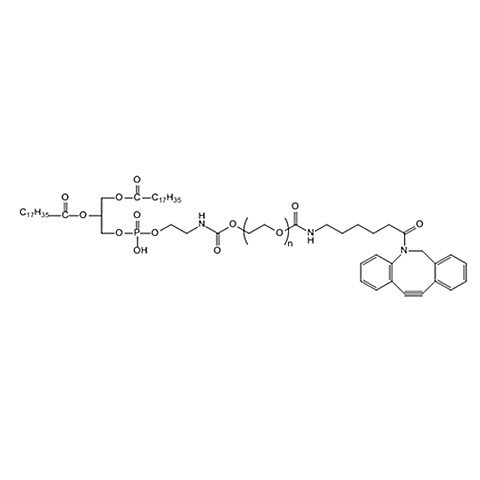
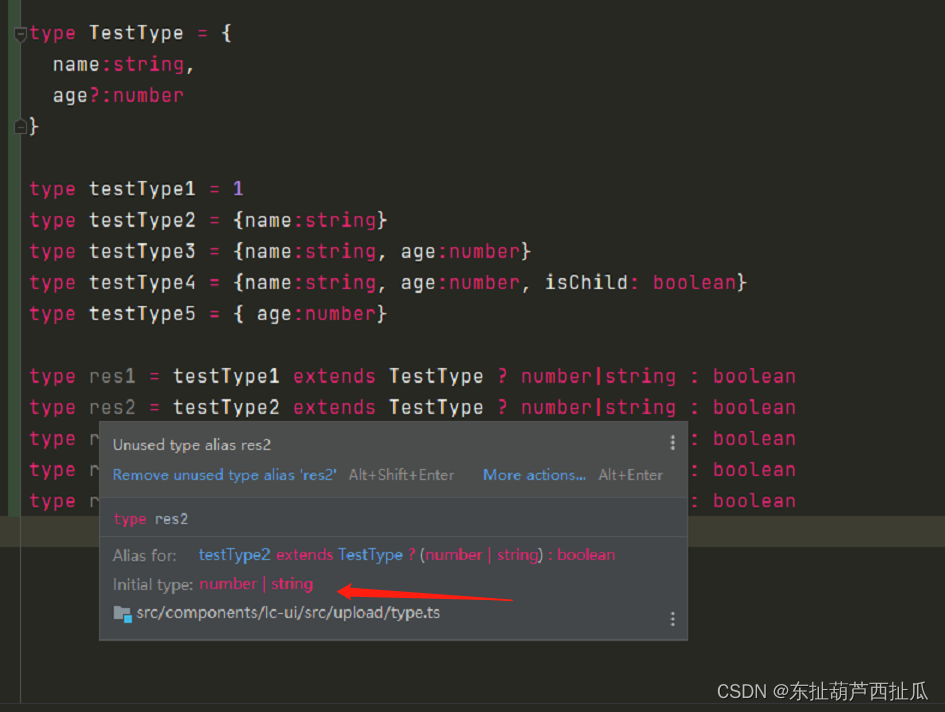

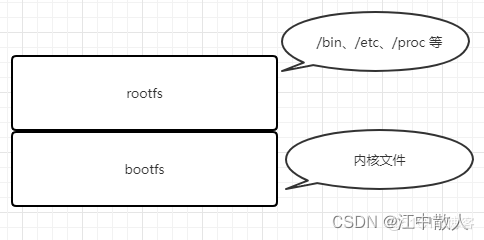
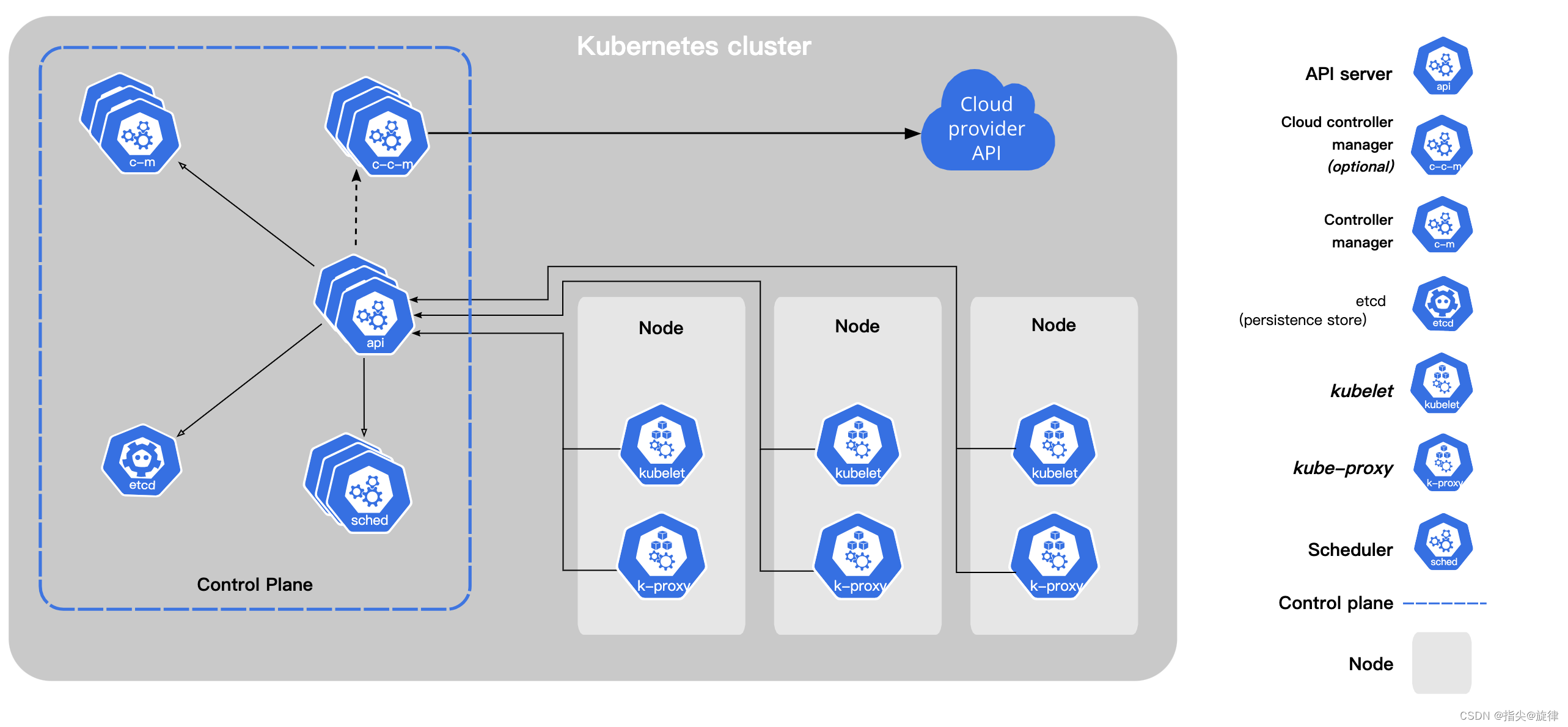

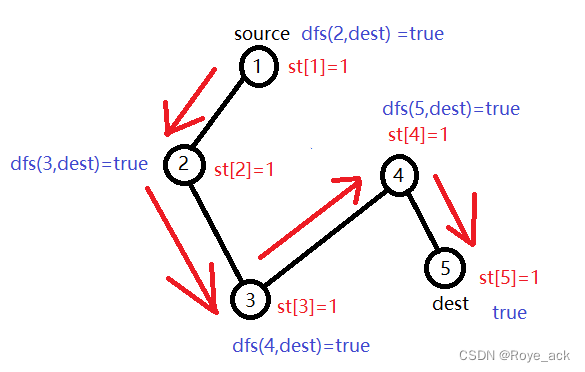
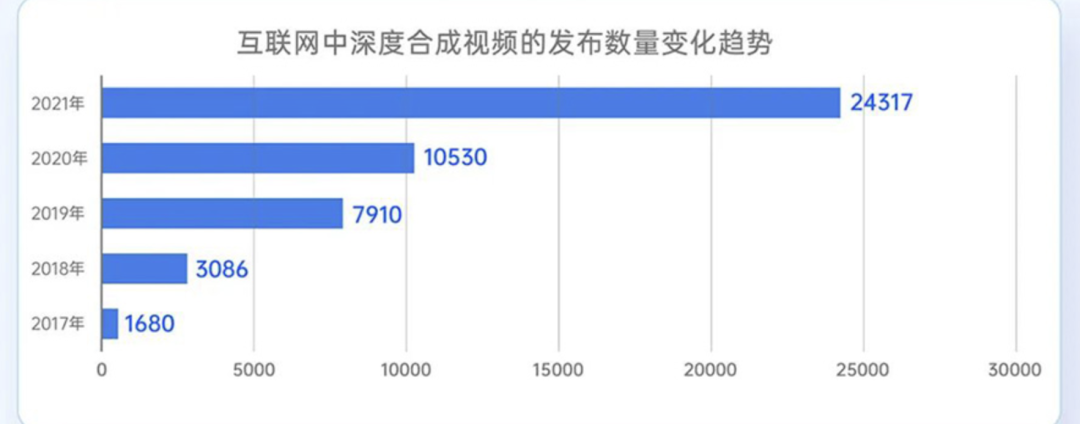

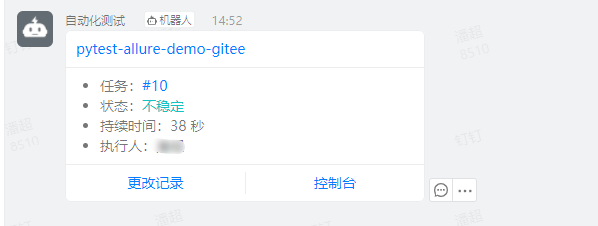
![[附源码]计算机毕业设计Python的家政服务平台(程序+源码+LW文档)](https://img-blog.csdnimg.cn/1e3ffa1acaac4d28a430c26be8ce9bcb.png)
